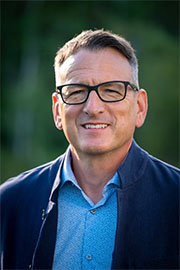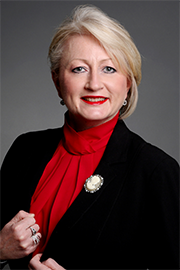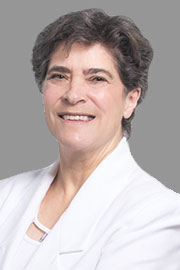- Mar/8/23 3:40:00 p.m.
- Re: Bill 71
I’m standing today to add my voice to the chorus of support for the Building More Mines Act. In reading over the act as well as the rationale behind it, I was reminded yet again—I can usually find a connection almost anywhere—of one of my favourite authors, Douglas Adams, the mind behind the wonderful book The Hitchhiker’s Guide to the Galaxy, known for having the words “don’t panic” inscribed in large friendly letters on its front cover. But to be more specific, I was reminded of his description of the Vogons, an alien race of officious interstellar bureaucrats. The Vogons “wouldn’t even lift a finger to save their own grandmothers from the Ravenous Bugblatter Beast of Traal without orders signed in triplicate, sent in, sent back, queried, lost, found, subjected to public inquiry, lost again, and finally buried in soft peat for three months and recycled as firelighters.”
It turns out the process by which Ontario has been opening and closing mines has been operating in a way that I feel Vogons might find astonishingly similar, and this bill aims to fix that, and our firelighters will have to be sourced elsewhere.
Right now, it can easily take 15 years to permit a mine. That kind of timeline is never going to work if we are going to accomplish what we promised to accomplish for the mining sector, for northern Ontario, and for the many communities and people who make northern Ontario their home.
What does the current sort of Vogonesque bureaucracy look like? If we talk about mine closures—closure plans, specifically—a closure plan is a plan that sets out in detail all the steps that a company will take to rehabilitate the mine after the mining is done. Of course, a mine does not last forever. At some point, you exhaust the resources within it that you’re looking for, but at that point you close the mine.
Under the existing legislation, a mining company has to file the closing plan for the mine before it in fact actually even begins to mine, which is challenging, as a mine can last 100 years or more—and in fact, some have. It’s quite challenging to predict what is going to happen 100 years on and how you are going to close and rehabilitate that mine, as you are stuck predicting the future.
The other issue, of course, is, before you open a mine, you have to file the financial security, which is the money that it’s going to take to close the mine and restore the location as much as possible to its original condition. None of that money is used for producing product or getting it to market, but it has to be posted in advance before you even start producing. So you’re investing in a project, having to put up a large amount of money before you are allowed to start on that project or to start making any money off of that project, and you also have to read the tarot cards to determine exactly how long that mine is going to last and how you are going to plan and finance its closure, before you have been able to open it.
As I said, this is why I thought of the Vogons when I was reading the rationale behind the Mining Act. Mining remains a very specialized industry, and with these very arcane current rules there aren’t a lot of places where you can go to find financing for a mining project.
Investment in the mining sector offers incredible benefits to all of Ontario. Those benefits go far beyond just the supply of critical minerals for EV battery projects. The new roads proposed as part of this investment will create economic opportunities for First Nations and northern communities. It will make it easier to access health services and education. Easier transportation of goods improves food security. It also reduces the cost-of-living increases that are increasingly borne by those living far up north. This isn’t about imposing southern Ontario transit choices on the north, though.
I want to highlight that the terms of reference for the all-season, multi-use road that will connect to the Ring of Fire were designed and submitted by the Webequie and Marten Falls First Nations.
There’s also the benefit from resource revenue-sharing. Back in 2018, there was one thing that the NDP, the Liberals and the PCs all agreed on, and that was resource revenue-sharing. It was, essentially, a non-partisan issue because everybody realized how much sense it made to give First Nations actual partnership and ownership in the projects that were occurring in their traditional territories.
- Hear!
- Rabble!
- Mar/8/23 3:40:00 p.m.
- Re: Bill 71
I always enjoy interactions with the member from Oshawa. I was hoping she could help me with something that I was having a conversation about with the member from Spadina–Fort York.
The opposition, and in this bill also, is very hesitant about expanding ministerial powers to expedite mining applications. We’ve heard that before about the ministerial zoning orders, and we’ve heard that before about the City of Toronto Act, and yet here, just a couple of weeks ago, in order to help the automotive industry, which is critical to her riding, the NDP joined us in voting for a minister’s bill in order to expedite a land transfer which just took land from one municipality and put it to the other because those municipalities couldn’t figure it out on their own. I was wondering how she could be supportive of that bill which would—ministerial orders—and yet be against it on this bill to expedite mining in the north.
- Hear!
- Rabble!
- Mar/8/23 3:40:00 p.m.
- Re: Bill 71
I am from Oshawa. I’m very proud to be from Oshawa, and I was very proud to stand up with the workers and the broader community in calling on this government to stand with us through very, very rocky and uncertain times. This is the Premier who said that the ship has left the dock, and it turns out he was wrong. We knew that he was wrong at the time for not believing in us, but what made the pieces come together that allowed for the kind of investment and, hopefully, long future of automotive in Oshawa was the bargaining units, was the workers and was the quality of work that has been done for so long and—
Interjection: For a century.
Here we have a bill that was recently before this House that said it had to be better than it was before the recovery, and they’ve just slipped in there now “comparable to ... as determined by the minister.” So it’s not just the “comparable” language that bothers me; it is that they’ve taken this from the public sector, where they had people with science backgrounds, like a particular director they snaked it from, and given it to the minister. What does he know that’s more than the folks who have been doing this work for years, and why can’t they explain that? It’s dodging environmental responsibility for no reason except just because it’s easier, I guess—but not in the long run,.
Again, processes that are smoother and faster, done well, is I think what we’re talking about, but this government hasn’t defined a qualified person or individual—is it somebody who has ever even worked in the Ministry of Mines who can sign off on? What assurances do we have that that isn’t going to create problems down the road?
We want to know, who is this qualified person and how do you define it? What makes the minister qualified to do the reclamation and the rehabilitation at the end of a mine? Does this make it faster? Does it make it better? It’s yet to be determined.
- Hear!
- Rabble!
- Hear!
- Rabble!
- Mar/8/23 3:50:00 p.m.
- Re: Bill 71
Thank you very much, Speaker. It’s good to see you in the chair today.
I’ve got something that’s really bothering me, and you didn’t address it very much. Do you know that there has been very little consultation with First Nations on this bill? Also in this bill, which I raised when I got a chance to stand up for another question—there’s nothing in the bill that is going to make sure that we have clean drinking water in Brantford, in Six Nations. And no clean drinking water in this bill—to say we’re going to make sure they have clean drinking water in First Nation communities in the north.
As we talk about making sure corporations can make billions of dollars, why are we not providing First Nations communities with clean drinking water—and doing it in the bill?
- Hear!
- Rabble!
- Mar/8/23 3:50:00 p.m.
- Re: Bill 71
It does sound like an opportunity. Give me a moment.
At this point—well, for decades, the wealth of the north just headed south and left northern communities with little. Now, First Nations with resource revenue-sharing agreements receive 40% of the annual mining tax and royalties for operational mines and 45% from the future mines in the area covered by the agreements. It’s important to understand that those funds go to our First Nations partners with no strings attached. They can use the money to address local needs, which allows for a very important amount of self-determination to assess their own needs, what their own communities require, and provide that—and, frankly, those needs remain very substantial.
When you look at, as I said, what these roads and what these mines bring—what this resource revenue-sharing brings, if you look at Webequie First Nation, which is closest to some of these mineral discoveries, is an excellent opportunity for that community to benefit from the planning or the development and the operation of any mines in the area. Webequie is a community that currently doesn’t have year-round access to an existing all-season road network. This type of remoteness significantly limits the economic opportunities for Webequie First Nation and its members. It’s difficult for community members, essentially, to continue living there with the limited employment opportunities of a place that is not accessible all-season round, as well as the high cost of living that’s caused by the fact that food, fuel, construction supplies often have to be transported by air most of the time. There’s also reports that the winter road season has been getting shorter.
In Marten Falls First Nation, there isn’t even a store for in-person shopping. So if someone runs out of essentials like milk or eggs or meat, diapers, formula, they have to wait until the next plane arrives and be prepared for high costs that are further inflated by shipping fees.
I saw an article recently about another community close in geographical location where a bag of flour was, I think, $40 and a can of coffee was $32. These are some of the consequences of inflation, of fly-in-only areas.
What, as I said, this offers is an opportunity to become free of that, to live in traditional territories, to benefit from the resources of those territories, to exercise self-determination, to have the finances available to make choices for their own communities in the way they best see fit.
Really, what this mining act does is, it says, “Instead of waiting for 15 years more for you to see the benefit of those resource revenue-sharing agreements, we’re going to get it done now. We’re going to make it so that if you have children right now, they’re going to see the benefits now.” They’re not going to be waiting for their children to see the benefits, who by that point may have left the community entirely because of the challenges of living in an area without road access.
The way I see it, with our current Mining Act, we can’t attract the type of investment that we need. There are unclear processes, inflexible requirements, and ultimately a whole lot of Vogon-style bureaucracy that’s holding back the sector. We have project delays, we have runaway costs, and we have all of Ontario losing out on opportunity.
The part that does, as I said, stick in my mind the strongest is what this offers to the First Nations partners in this area and the fact that it is so closely tied to those resource revenue-sharing agreements that were basically the subject of a non-partisan agreement that they were necessary in the 2018 election.
My commentary, when we talk about clean drinking water, for example, is that one of the challenges with this is, generally speaking, a lack of infrastructure, a lack of education, a lack of people in the community who are trained and able to deal with these things and availability of parts.
The way I look at it is, a community that is left fly-in only, that has no ability to profit from its own resources, is a community that will continue to be plagued by those kinds of problems.
Really, I see this as very much part of the solution and not part of the problem.
- Hear!
- Rabble!
- Hear!
- Rabble!
- Mar/8/23 4:00:00 p.m.
- Re: Bill 71
I am the MPP for Nickel Belt, and I’m willing to bet that I have more mines and abandoned mines in Nickel Belt than in any of your ridings. So right now, whether you talk about coal mines; Copper Cliff north; Copper Cliff south; Creighton, the deepest mine, where the neutrino laboratory is; Frood mine; Garson mine, an over-100-year-old mine; Murray mine; Craig mine; McCreedy mine; Totten mine—Totten is one of the new ones from Vale, where everything is electric underground. It’s pretty cool. We also have Fraser and Nickel Rim South mine, which are Sudbury Integrated Nickel Operations, Glencore—also, a new mine in my riding, very high-tech, very different from the old mine, Chester mine, Côté Lake. I could go on and on, Speaker, but I just wanted to give you an idea that mining is doing well in Nickel Belt.
I attended the PDAC conference, and I must say that I was quite pleased to meet the chief from Wahnapitae First Nation, Larry Roque. Some of the band leaders were there with him—Councillor Craig Tyson, and many more. Do they want change to the Mining Act? Yes, absolutely.
Wahnapitae First Nation is on the side of Wahnapitae Lake, a beautiful, huge lake in the city of Greater Sudbury. When the treaty was written, Wahnapitae First Nation was to have a six-mile-by-six-mile reserve on the side of Wahnapitae Lake. For some reason—I won’t go into the details, but it’s nothing good—they ended up with a two-by-two piece of land on the side of Wahnapitae Lake. They had to go through years and years and years so that everybody agreed that Wahnapitae First Nation has a treaty right to a territory of six miles by six miles on the side of Wahnapitae Lake. Move forward and say, “Okay, the government finally agrees. How do we change the territory?”—because they are full to capacity. They have a wait-list of 78 of their members who want to move back to their reserve, who want to move back to Wahnapitae First Nation, but they can’t, because they’re stuck in a two-kilometre-by-two-kilometre square on the side of the lake. That has been going on for decades. Have we seen the government make changes to the Mining Act so that we can—do you know why they cannot gain the territory that is justifiably theirs? Because there are mining claims all the way around. And when some of those mining claims expire, somebody anywhere in Toronto clicks on his mouse and says, “Well, I’m going to put a claim here.” You don’t have to come to Nickel Belt. You don’t have to stake. You don’t have to do anything. You click with your mouse, and that’s it. Wahnapitae cannot expand. Why isn’t that in the act?
Wahnapitae First Nation’s leadership has met with the government multiple times. The government agrees that they are allowed six miles by six miles on the side of Wahnapitae Lake—but yet, it’s not being done, and the 78 families who want to move back in have nowhere to call their own, until they can.
Wahnapitae is always at the forefront—if this doesn’t work, they put alternate ways of doing things forward. They said, “Okay, well, if there are mining claims all the way around, how about we take”—they did the math. They own 20,000 acres. “Okay, we’ll take our 20,000 acres on crown land elsewhere, and we’ll make it work one way or another to have”—but we need the government to listen, and they’re not willing to listen to First Nations. They’re not willing to listen to First Nations who have gone through the courts, who have won all their cases, who are being very reasonable as to what their rights are—their rights that were taken away from them. And they’re still waiting. That’s not right.
Wahnapitae First Nation deserves to be heard. They deserve to have their 20,000 acres of land given back to them. They deserve to have a government who realizes that when a mining claim expires, you put a big X on it and you say, “No, this goes to Wahnapitae First Nation, because this was their traditional territory, and it belongs to them.” But the government is not willing to do this. The government is not willing to change the Mining Act in a way that would respect First Nations—much to the contrary. The government is willing to change the Mining Act so that the director of mine rehabilitation will be no more, and the provision for a closure plan respecting advanced exploration may be filed even if it does not meet the act or the regulations.
Let me tell you what that means.
I have abandoned mines throughout my riding. I will talk to you about Long Lake gold mine. Long Lake gold mine was abandoned—because it’s always the same: They come, they make millions of dollars, then they declare bankruptcy and disappear, but the mess stays. Long Lake gold mine has been leaching arsenic into Long Lake. Long Lake is a beautiful lake in the city of Greater Sudbury, with lots of people who enjoy drinking it, fishing in it, swimming in it—and now there’s arsenic leaking in it since 1970. I have been writing to ministers after ministers after ministers to say, what is the plan to rehabilitate the old gold mine so that it stops leaching into Long Lake—and then it goes all the way to Lake Panache. It affects the fish; it affects the drinking water. They have been working at it—I actually pulled out some of the letters that I sent. I look at my picture on my letterhead and say, “Who is this woman?” because it was so long ago that I wrote those letters. I get answers and everything—same thing.
The last time, I got an answer from this Minister of Mines telling me that the Long Lake mine rehabilitation project is at the top of the list, that they have the money for it, that it’s happening. But it’s 2023, and nothing is happening. The leaching from the abandoned gold mine into Long Lake is still going on, and nothing is happening.
So when you tell people who live close to those mines—“I don’t work in a mine, and I have no intention of working in a mine, but they are all around me.” When you say that you’re going to change the Mining Act—yay, there are lots of things we want changed in the Mining Act. But when you tell us that the change that you’re willing to do is that they won’t have to have money put aside to do rehabilitations of their mine site—when we have hundreds of abandoned mines, like the gold mine in Long Lake, that are polluting the environment? Would anybody like to have arsenic in their water? Does anybody go to a lake in the summer to swim, to boat, to fish, to—whatever you’d like to do in the lake—and know that there’s a mine a couple of hundred feet up that is leaching arsenic into your lake? This is what we are living with throughout Nickel Belt, because there are hundreds of them. You travel through the bush in Nickel Belt—and all of a sudden, there’s a big fence. Don’t cross the fence, because there’s a good chance there is a mine shaft in the middle of that fence that will send you down 200 or 300—a couple of miles down; we’ll never see you again. This is the reality of Nickel Belt. This is what we live with, and we’re okay with this, but we are not okay with a government who puts forward changes to the Mining Act without talking to Atikameksheng Anishnawbek, without talking to Wahnapitae First Nation, without talking to Mattagami First Nation.
Let me tell you about a new mine that just opened. Premier Ford was there, for the grand opening of Côté Lake gold mine. Côté Lake did their homework. Côté Lake is in Treaty 9. They sat down with Mattagami First Nation; they sat down with Flying Post First Nation; they sat down with Treaty 3 Métis. They made sure that they had a solid relationship with them, a sharing agreement in writing. All of those people were there for the opening of Côté mine—not this fall, but the fall before. They were all there, because the mining company—at the time, it was Iamgold. They’re now in partnership with—I forgot who the partnership is with. It will come to me. Anyway, they were all there, because the mining company knew that in order to be successful, they needed to have a strong relationship with the people who—this is their territory. This is Mattagami First Nation and Flying Post First Nation; this is Métis territory. They did their homework. They were welcome. They were supported. They were there at the opening.
The mining companies know how to do this. The government has to respect First Nations.
- Hear!
- Rabble!
- Mar/8/23 4:00:00 p.m.
- Re: Bill 71
I’m so glad the member from Kitchener South–Hespeler provided such a picture of her thoughts on the process in communicating what she did. She talked about a qualified person being there to certify the plans involved and the investment that a company has to put forward even before an operation gets one shovel in the ground.
Would the member please advise on new innovations in this act that will help ensure that the mining industry is responsibly developing resources?
- Hear!
- Rabble!
- Mar/8/23 4:00:00 p.m.
- Re: Bill 71
I listened intently to my regional colleague from Kitchener South–Hespeler. Some of the language that she used I found very interesting. She said that all these projects offer everything to First Nations communities—that in and of itself indicates a power imbalance.
When you have a selective consultation process, you end up in court—and this government is very well acquainted with ending up in court. They just lost a very big court case this week again, on election finances. The judge determined that that piece of legislation undermined the right of citizens to meaningful participation in the political process and to be effectively represented. The government is fighting this court case that they’ve lost.
You’ve lost 15 court cases now. You have a pattern which is very disturbing and also wasteful, and so the trust is not there, particularly with consultation with First Nations, Métis, Inuit folks in Ontario. Why should anybody trust this government?
- Hear!
- Rabble!
- Mar/8/23 4:00:00 p.m.
- Re: Bill 71
As I said in my reference to the Vogons, a lot of this is about making sure that we are modernizing the act, that we are streamlining a very antiquated and overburdened by bureaucracy process. So I criticize the current system by which mine closure planning is done. Right now, we are talking about significantly improving that system so that we have progress timelines, we’ve got lower upfront expenses for opening a mine—and simplifying the process by which we prepare that closure plan, and allowing phased financial assurance in order to fulfill that obligation which is not currently available. In many ways, we are, as I said, tackling those bureaucratic inefficiencies head-on.
I will go back to what I was talking about before, which is the benefits.
I would encourage any First Nations that feel they have more to contribute to, by all means, reach out and share that.
However, I believe that my example of the $40 bag of flour and the $32 can of coffee actually came specifically from one of the First Nations that is indicating that it has some objections, which seems an odd position to take.
At this point, my response remains that this is going to offer untold benefits to communities that have not been able to benefit from their own resources.
- Hear!
- Rabble!
- Mar/8/23 4:00:00 p.m.
- Re: Bill 71
I really appreciated, first of all, your use of classic literature, with your references to the Vogons.
My question to you is, I will say, one of timing—through the Speaker, of course. We heard that it takes 15 years to get a mine up and running. I come from an IT background, and I’ve seen the changes and the progress made and how technology keeps on moving forward and changing. If we have to wait 15 years for that next mine, do you think the technologies that are being explored across the world will actually have moved beyond what is currently planned? Do you think that timing is appropriate for the evolution of our green technologies?
- Hear!
- Rabble!
- Mar/8/23 4:00:00 p.m.
- Re: Bill 71
As I’m listening to the debate, I have to say that what’s most interesting is that there is so much innovation going on in the mining industry. That’s something I’ve been hearing over and over, and it’s leading to what we are looking for as a province to develop our mining base.
So my question to the member is this: Are there any new innovations in this act that will ensure the mining industry is responsibly developing our resources?
- Hear!
- Rabble!
- Mar/8/23 4:00:00 p.m.
- Re: Bill 71
You have communication with two First Nations, but I’m wondering what your plans are for the five other First Nations in the region who are opposed and who are very, very upset that announcements have been made about the Ring of Fire without their free, prior and informed consent.
- Hear!
- Rabble!
- Hear!
- Rabble!
- Hear!
- Rabble!
- Mar/8/23 4:10:00 p.m.
- Re: Bill 71
I always very much appreciate the speeches that we hear from the member from Nickel Belt. She makes it very real and very personal, and I appreciate that.
My question to her is, what would it do for Nickel Belt to be able to see more quick, safe expansion of mining in that area, to provide more jobs—not just for the north, but for all of Ontario?
- Hear!
- Rabble!
- Mar/8/23 4:20:00 p.m.
- Re: Bill 71
We have been mining in Nickel Belt for over 100 years. We know how to mine in a way that is respectful of the environment, respectful of the people, and respectful of the treaties that exist with First Nations and Métis people.
In order to move projects faster, you need to engage with the community, because we are activists in Sudbury. If a mining company wants to do something that does not respect First Nations, that does not respect the environment, expect us to block the highway like we did on Highway 144 before, because we won’t take this.
You want to move things forward faster? Be respectful, talk to people, have established relationships. This is how success comes.
If we want our society to have access to every kind of mineral from nickel to copper to precious metals—we have them all in Nickel Belt. In order to mine them, you have to have support from the population, and you have to have a relationship with the First Nations territory that those mines go on. It’s as simple as that.
I can assure you that the Atikameksheng Anishnawbek, Mattagami First Nation and Wahnapitae First Nation were not consulted before Bill 61 was put out.
Ce qu’on demande, ce que la Première Nation demande, c’est que lorsque les terres de la Couronne deviennent vacantes et qu’il n’y a plus de « mining claims », qu’il n’y ait pas droit d’en mettre un autre, surtout quand c’est quelqu’un qui n’a aucune intention de jamais ouvrir une mine là. Ils ont seulement l’intention de peut-être faire l’argent à un moment donné, mais pour la Première Nation, ça veut dire que, eux, ils continuent d’avoir 78 familles qui veulent venir dans la Première Nation qui ne peuvent pas venir parce qu’ils n’ont pas de place.
- Hear!
- Rabble!
- Mar/8/23 4:20:00 p.m.
- Re: Bill 71
I want to say to my colleague from Nickel Belt, that was a very interesting 10 minutes of talking about your community, and I learned a lot about it.
I try to listen to everybody here, but I listened to the Conservatives here, and they’re saying that First Nations were consulted. You’re saying First Nations—and you listed the First Nations and Indigenous communities that weren’t consulted. Which one of you is telling the truth? I’m a little confused.
- Hear!
- Rabble!
- Mar/8/23 4:20:00 p.m.
- Re: Bill 71
I’m very pleased to stand in the House today representing the wonderful people of Hastings–Lennox and Addington and in support of this legislation which supports the mining industry. This, of course, is especially noteworthy in my own riding. As the previous speaker was talking about, my own riding is actually the original epicentre of mining in Ontario, even in Canada, starting as early as in the 19th century.
Some 204 years ago, in 1819, there was a blast furnace erected in Marmora township in Hastings county. The ore was obtained from the nearby Blairton mine. Iron production began in Marmora in 1822. I would also note the first discovery of gold in Ontario at the Richardson mine was at Eldorado in Hastings county, which started Ontario’s gold rush. The Deloro gold mine is believed to have started in about 1868. In 1881, gold was discovered at Kaladar and iron ore was discovered at Coe Hill and Mayo/Carlow. In 1883, actinolite mining began in Hastings county. In 1890, more gold discovered in Marmora township; fluorite discovered near Madoc.
On an interesting note, the Canadian talc mine located in Madoc, Ontario, was one of the oldest continuously producing mines in Ontario. Mining operations began in 1896 and continued until 2010. It was at that time one of only three mines on the planet that had operated continuously for more than 100 years.
And there are many more. The mines in Eldorado have iron and copper and, of course, gold; fluorite in Madoc; marble quarries in Dungannon and Faraday. Cobalt; silver; stellite, a cobalt-chromium alloy; fluorspar and magnetite—and in 1949, there was the discovery of uranium ores in Faraday township near Bancroft. Production began in 1957, and a total of four uranium mines were operated in that area in Bancroft until 1967. Faraday, the last one to close, has actually since reopened as Madawaska Mines and currently produces uranium for the world markets.
Madam Speaker, my riding certainly knows mining. Suffice it to say the counties of Hastings, Lennox and Addington have a long mining history that goes back over 200 years, and that was a major pillar in the original development and successes of this province. We know what significant economic drivers these facilities can be.
It’s fair to say that the opening of the railroads across this country led to an awesome period of economic growth and the literal development of this country. It’s also very fair to say that those railroads were developed because of the availability of iron from these mines. The big buildings here in Toronto, the economic centre of the country, are still standing in many cases because of the iron from those mines. It’s quite possible that the skeleton of this very building we’re standing in has iron ore from Marmora.
Mining provides the minerals that have been the backbone of this country, and it is the critical minerals that this bill will enable to get to market that will be the backbone of the next wave of the green industrial revolution. As mentioned, there is still mining in the Marmora and Bancroft area, but the greater focus of the bill, as has been talked about, is about the mines coming on stream in a reasonable amount of time and, most often, in the northern parts of the province that have unfortunately too often been ignored by past governments.
While these new mines will be geographically located in the north, the impact and the economic drivers will provide a tremendous benefit for all of Ontario, for our environment and for the whole world, in fact. The world needs these critical minerals for that next wave of green technologies.
Last July, there was a major announcement in my hometown of Loyalist township: a new battery plant that will bring 1,000 new jobs. For a community of 18,000 people, that’s just absolutely a once-in-a-generation fantastic injection of economic growth. This firm will build battery components that will go into all types of batteries to support the technology that is driving our world, and it will use minerals that this bill will help to open up. These minerals and these batteries could be used for grid-level battery storage.
These installations will help offset the missing component that the previous government didn’t figure out. The Green Energy Act imposed alternative energy electricity generation facilities on areas that didn’t support them, and it paid more per kilowatt hour than they were selling the electricity for. We all know their plan was to keep increasing those prices so that we’d all pay through the nose.
But they also forgot that while these generators do make green electricity, they’re intermittent generators and therefore can only be a small part of the solution until we manage to catch up to the storage-of-power requirements that this province truly needs. Battery and kinetic storage are part of the plan that the Ministry of Energy and the minerals in these mines will make possible.
These batteries will also be used for the future of the electric vehicles that will drive the automotive sector here in Ontario. With the Premier’s leadership and the amazing work by Minister Fedeli, we are reversing the job losses that dominated the last 15 years under the previous government and gaining tremendous ground, bringing in hundreds of thousands of jobs across Ontario and ensuring the future economic prosperity of this province. We’ve seen new plants in Windsor, in Essex, in Brampton.
These vehicles are also a major element in our plan to protect the environment. We know that the internal combustion engine is a major contributor to greenhouse gases. Being able to move an entire worldwide industry to newer, greener methodology is a massive undertaking.
By supporting mining here in Ontario, we’re encouraging that critical mineral extraction here in Ontario, where we have respect for the environment, where we have respect for the human rights of our workers and where we have respect for the First Nations that partner with us in these mining regions.
The last few years, the COVID pandemic and the invasion of the Ukraine have shown us just how sensitive our supply chain is. It taught us that we should never again allow these minerals to be only available from jurisdictions around the world that have little interest in human rights, have little interest in environmental protection. Right now, these jurisdictions have a stranglehold on the supply of the very minerals so critical to the entire world moving forward with high-tech green technologies.
Here in Ontario, we have a stable government environment, and we have the resources to not only provide for our own future but to support the world during this climate crisis. The minister, in his comments earlier, made the point that governments don’t create mines, companies do. And companies are made up of people, made up of mining engineers and geologists and materials scientists—the best and the brightest. We just heard that 40,000 of them are down at the conference right now. They’re here in Ontario, in Canada from around the world. These are the people that will actually get this done.
Most of you know I am no geologist or engineer, so I’m both fascinated by and excited about the new technologies that are being developed right here in Ontario. I was recently made aware of a new innovative process that’s being developed by one of our companies. The company is working on the extraction of lithium—no surprise—in support of our battery and electric vehicle industries. But they’ve also developed a technique that can use the waste rock from that mine as sort of a sponge to permanently absorb and sequester carbon dioxide. So not only are they preparing to provide the very important minerals for the latest technology; they’re also helping to solve an existential threat to the world. Creating this new, innovative material will aid all of us in our attempts to achieve net zero.
When smart people—people smarter than me, certainly—are provided with the flexible environment to be innovative and successful in their fields, the province and the whole world benefit. This bill will modernize and simplify the application process and provide regulatory certainty to those innovative technology geniuses who are doing this. And in doing so, they will bring us greater prosperity and they will provide benefits to the province and the whole world.
I’ve heard that they will, and I do hope that all members of this House will want to see strong environmental protection in mining and not the dangerous and damaging processes that we see overseas. I hope that all members of the House want to see Ontario build its sustainable—
- Hear!
- Rabble!













